 "Boxer_4" (Boxer_4)
"Boxer_4" (Boxer_4)
10/21/2015 at 09:00 ē Filed to: None
 44
44
 60
60
 "Boxer_4" (Boxer_4)
"Boxer_4" (Boxer_4)
10/21/2015 at 09:00 ē Filed to: None |  44 44
|  60 60 |
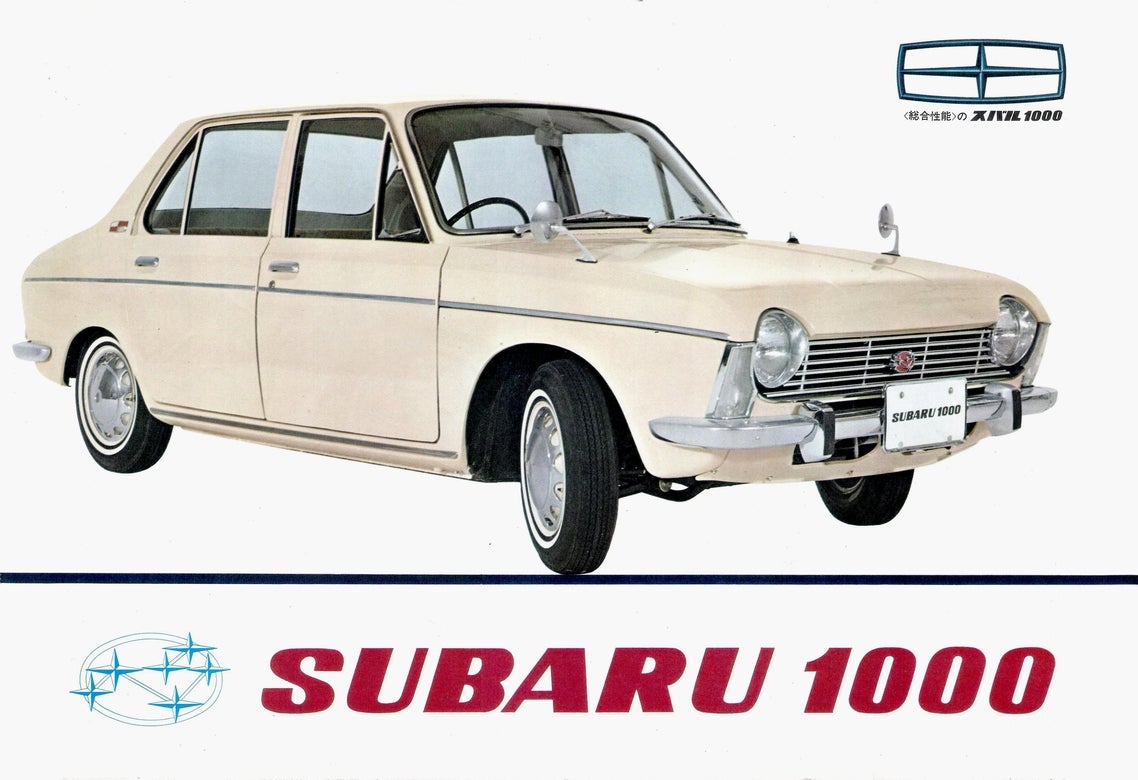
On October 21
st
, 1965, Subaru revealed the Subaru 1000 at the Hilton Hotel Tokyo. Eight days later, the 1000 was shown at the 12
th
Annual Tokyo Motor Show held in Harumi, Tokyo. This was Subaruís first entry into the blossoming compact car class. This was also a significant milestone for a company only known for its kei cars. The Subaru 1000 was technologically advanced for its time, and introduced many design elements that helped define Subaru as a company. This new model also set the stage as one of their first models truly suitable for global export.
Just seven years prior, Fuji Heavy Industries introduced their first vehicle under the Subaru brand. This vehicle was the Subaru 360, an entry in the kei car class designed to get the people of Japan into four-wheeled vehicles and promote the growth of the Japanese automotive industry. Now, in the early 1960s, the Japanese public was buying cars like never before. They were demanding larger, more comfortable cars with more features than was typical of the kei car class at the time. The Subaru 360 was not going to cut it. Several automobile manufacturers designed products to enter this emerging compact car class, including Toyota and Nissan. Subaru decided to enter this promising market, too, in a way that only Subaru could have imagined.
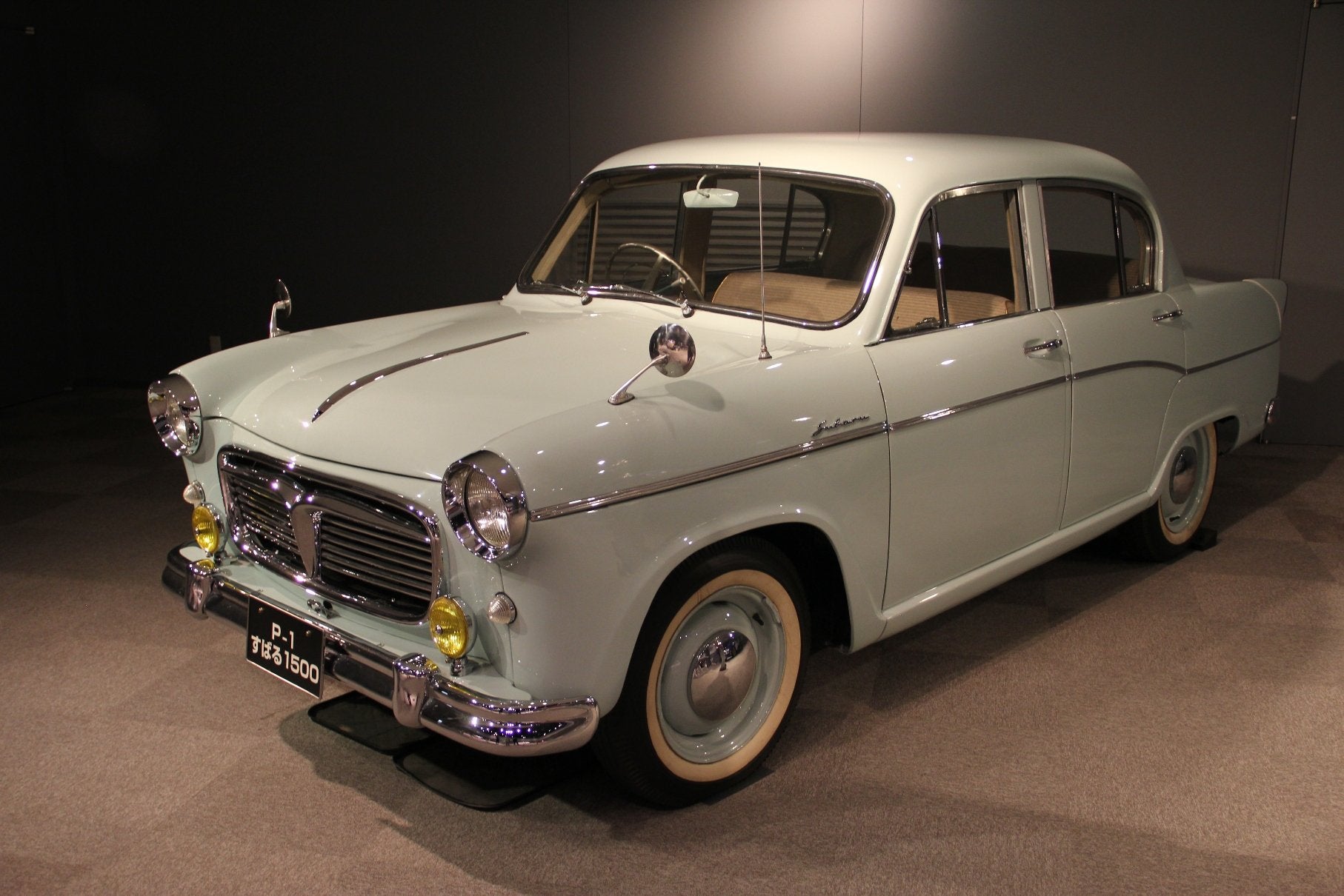
Subaru actually began work on a compact car back in 1954, four years before the introduction of the Subaru 360. This vehicle was known as the Subaru 1500, but was known internally by its development code as the P-1. Shinroku Momose, who had been with Fuji Heavy Industries and its predecessors since 1942, was assigned to the project as the lead designer. The 1500 used a monocoque body construction with independent front wishbone suspension and rear leaf spring suspension with a live rear axle. The 1500 used a front engine, rear wheel drive setup; this was the only FR vehicle produced by Subaru until the introduction of the BRZ in 2013. The water-cooled 1.5 liter four cylinder engine was sourced from the Peugeot 202, and built by Fuji Precision Industries. Subaru later designed its own 1.5 liter water-cooled four cylinder engine, which was 20% lighter than the Peugeot unit it replaced. Only 20 1500s were built, with some serving as taxis in Gunma, Japan. Due to an unestablished market and lack of mass production capability, the project was scrapped in favor of the Shinroku led Subaru 360 project.
Work resumed on a compact car entry in 1960, with two separate projects being examined in parallel. One project was a continuation of the 1500, known at the A-5. The other project was a smaller compact car, known as the A-4. These two projects would lead to one combined effort, the 63A, with the project more closely following the developments of the A-4. The biggest debate of the initial design was determining the drivetrain layout and ultimately the drivetrain. After design goals were evaluated, five design conditions were laid out that needed to be met:
1. Considering the size, adopt a layout that offers good interior comfort, wide trunk space and plenty of baggage room inside the car and makes it easy to conduct maintenance inspections.
2. Strive to keep weight down.
3. Adopt four-wheel independent suspension in order to enhance ride quality and stability.
4. Aim for good durability based on painstaking design and practical durability testing.
5. Secure reliability from low speeds to high speeds by improving in mountain and high-speed testing.
It was eventually determined that the new project would utilize a front wheel drive layout, rather than the rear wheel drive layout utilized in previous projects.
It is interesting to note that the term ďFFĒ (front engine, front wheel drive) is believed to have originated from Subaru engineers using the term internally during the design of the 1000. Subaru started using the acronym in their brochures as a catchy advertising term, which seemed to catch on in the industry.
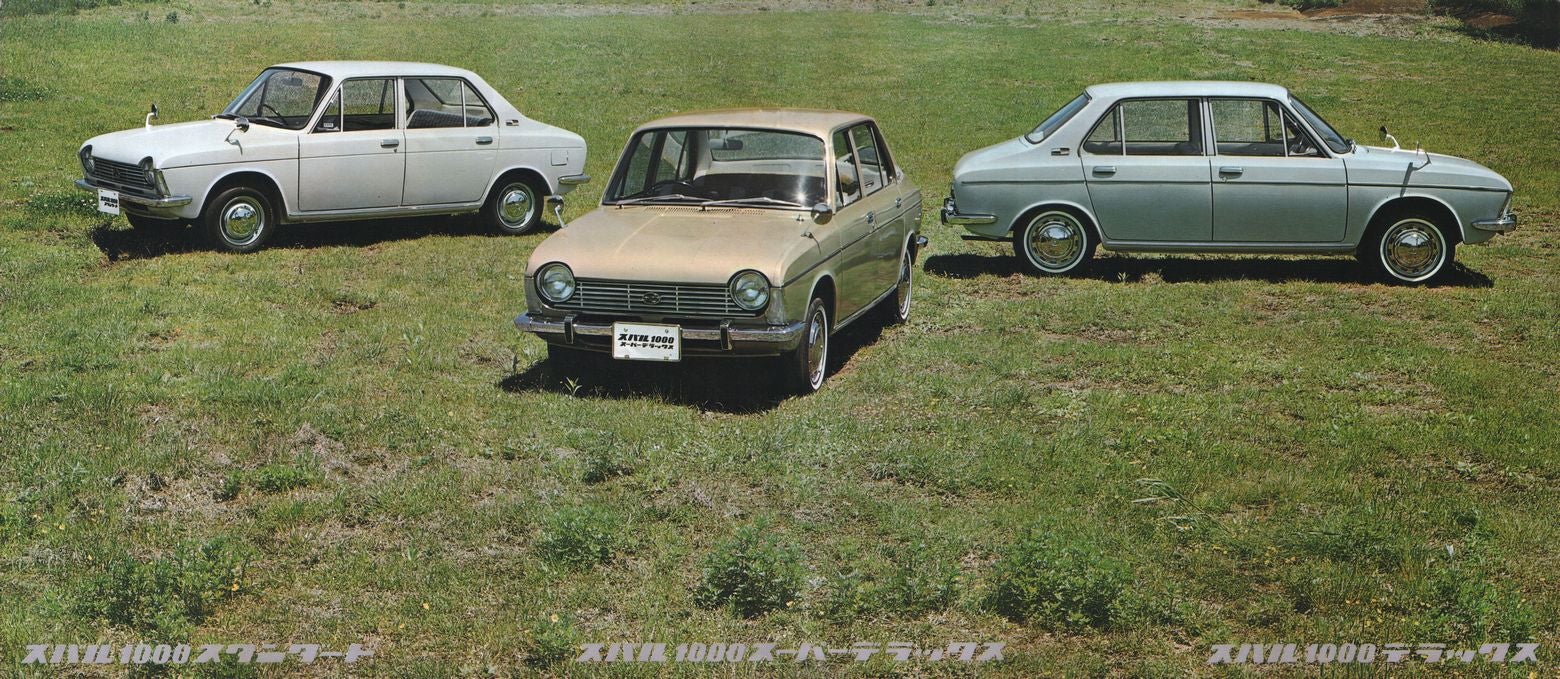
Once the drivetrain layout was determined, the drivetrain itself needed to be designed. Lead designer Shinroku Momose instructed designers that the engine for the new front wheel drive sedan to be developed could be any configuration as long as it satisfied five conditions:
The differential gear must be located on the center line of the car body in order to make the drive shaft operating angle as small as possible.
The location of pedals is decided to make driving easy for the driver, and cannot be changed.
The engine height must be low in order to keep the center of gravity down and increase the degree of flexibility in body design.
The front overhang needs to be shortened, since the vehicle is FWD.
Vibration should be reduced in order to enhance the ride quality.
Three engine configurations were determined to be able to satisfy these five conditions; a transversely mounted in-line four-cylinder engine, a longitudinally mounted V-type four-cylinder engine, or a longitudinally mounted horizontally opposed four-cylinder engine. The V-type four-cylinder was excluded almost immediately, due to concerns about difficulties in reducing the vibrations with the technology they had available to them at the time. This left the transverse inline four-cylinder and the longitudinal horizontally opposed four-cylinder. In front wheel drive car development during this time, driveshaft joints were the most difficult problem. The engineers as Subaru wished to devise a way to keep the stress on the driveshaft joints to a minimum. This could be accomplished easily with the use of equal length driveshafts. Of the two engine configuration choices remaining, one had a significant advantage in the ease at which the front driveshafts could be made equal length. Ultimately, the horizontally opposed four-cylinder was chosen; a trademark engineering detail that continues in Subaruís full size passenger vehicles to this day.
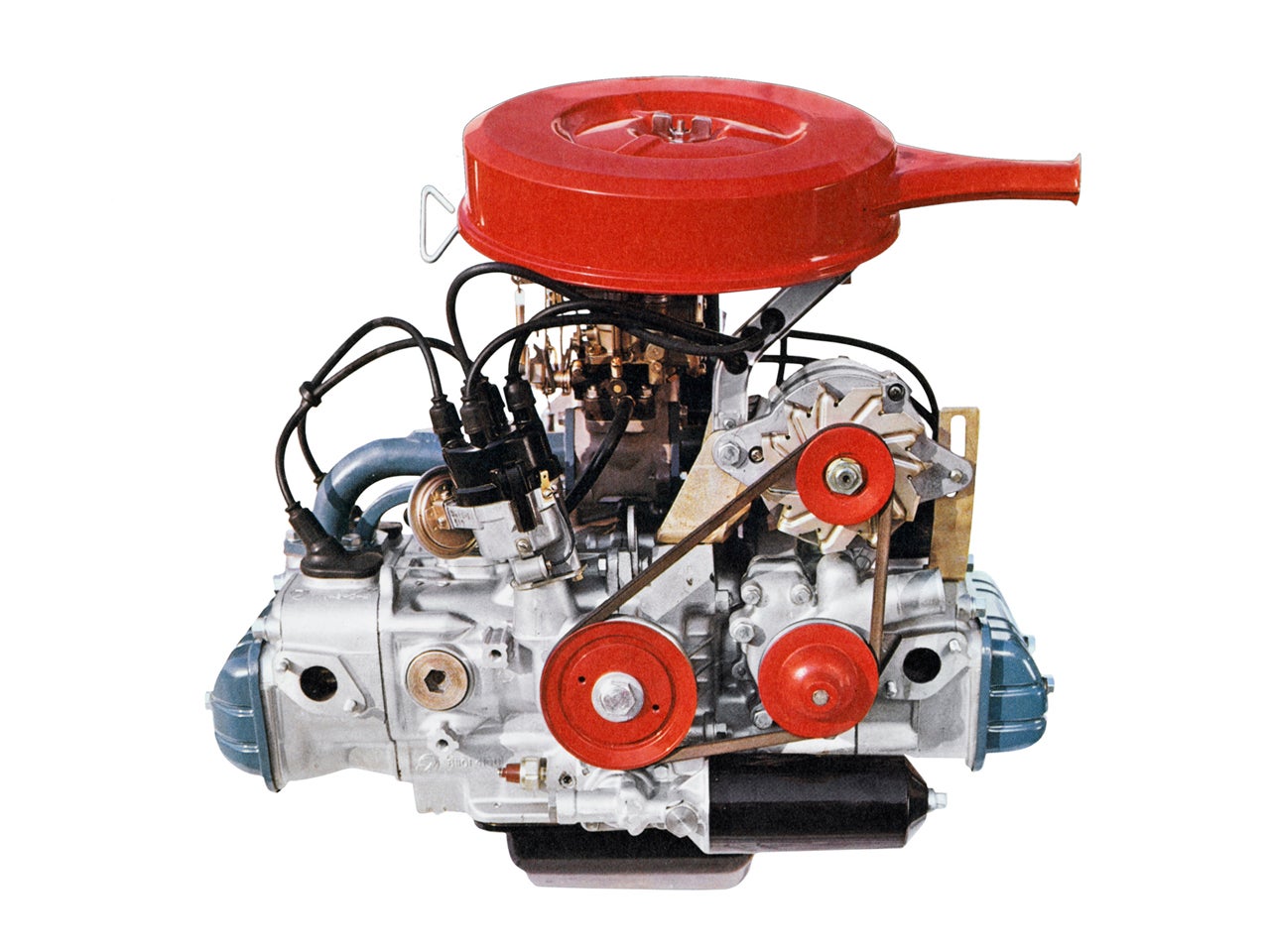
Development of this new engine commenced, with several goals laid out: compact, light, powerful, and reliable. The new engine would be water cooled, and use a 2 valve per cylinder pushrod configuration. (Studies of an air-cooled engine returned unfavorable performance results). Aluminum was chosen as the material for the block and the heads. Although aluminum was significantly more expensive than cast iron, the decision resulted in a significantly lighter engine assembly. The final product resulted in the EA52, Subaruís first production Boxer engine. The 977 CC engine produced 55 hp and 57 ft-lbs of torque with a relatively high 9.0:1 compression ratio. It also weighed 15% less than an inline four-cylinder engine of comparable displacement. The development of the EA52 can be considered one of the first cases where the weight of the engine was considered in the pursuit of vehicle and engine performance. The EA52 was also very refined for its time. In fact, during a two-minute trial operation while the new car was displayed at the 12 th Annual Tokyo Motor Show, it is said* that most visitors did not even notice that the engine was running due to how quiet and smooth the engine ran.
*(Knowing older Subaru engines, I do doubt the validity of that claim)
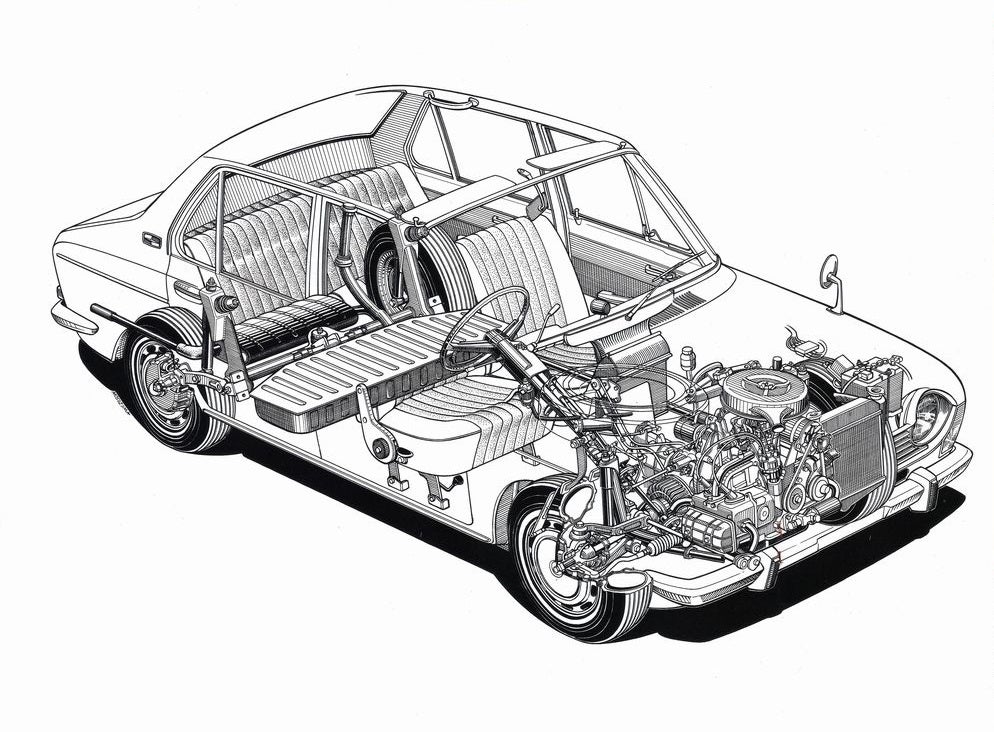
The unique engineering of the 1000 did not stop with the engine and drivetrain; over 30 mechanical patents were granted for this car alone. The front brakes consisted of inboard mounted front drums. This was to reduce un-sprung weight, simplify the implementation of an independent front suspension setup, and to help prevent dirt and debris from entering the braking system. The 1000 also had a unique cooling system. Rather than using a large radiator and big cooling fan, the new Subaru used a dual radiator setup consisting of a main radiator and a sub-radiator. Only the sub-radiator would be used until medium and high speed driving was reached. Under heavy loads, a small electric fan would activate to cool the sub-radiator. The result was an engine that stayed cool, while reducing load on the engine and silencing unnecessary fan noise. During the winter months, the sub-radiator would provide heat to the passenger compartment in place of a heater core. Subaru claimed this system provided the heating capability of an engine twice the size. The car utilized four-wheel independent suspension, with wishbones up front and trailing arms and coil springs in the rear. True to their considerations of large passenger and luggage space, the spare tire was located under the hood, above and behind the engine. This design detail, facilitated by the low, flat nature of the Boxer engine, would carry on into the early 1990s.
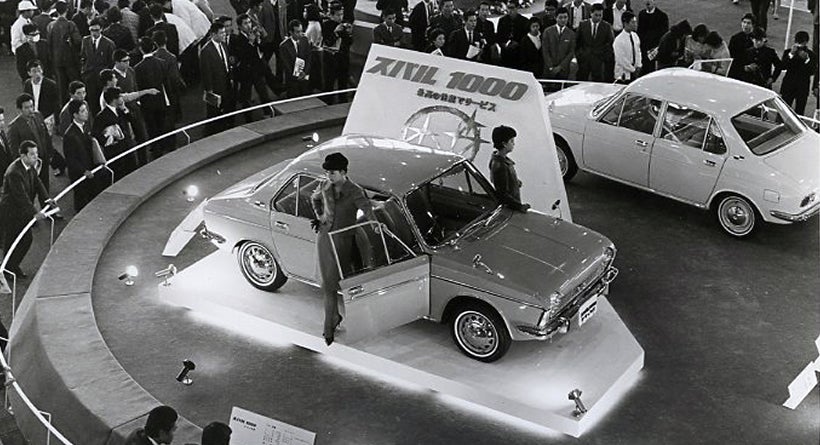
The 1000 was the beginning of a new era for Subaru. It officially went on sale on May 14, 1966 with only a sedan as an option. The 1000 would evolve into a full model lineup, with coupe and wagon body styles added later. Several performance versions were developed through the lifecycle of the vehicle; the ultimate being the 92 horsepower FF-1 1300G Sports Sedan and Super Touring. The 1000 would also be used as the testbed for the first 4WD Subaru models in 1971. An evolution of the 1000, the FF-1 Star, made its debut on US shores in 1969, giving Americans the first true taste of what Subaru had to offer besides the 360, which was misunderstood and out of place in the US market. The FF-1 Star was surprisingly popular for an import at the time, attracting drivers with its high fuel economy and low price. The 1000 was succeeded by the Leone in 1972, and ultimately, the Impreza in 1992. The Subaru models of today are quite different from the original 1000, but the basic DNA is still apparent. Fifty years may not seem like a long time as far as automobile companies are concerned, but it is impressive to see how far Subaru has come in that amount of time, and where the next fifty years may take them.
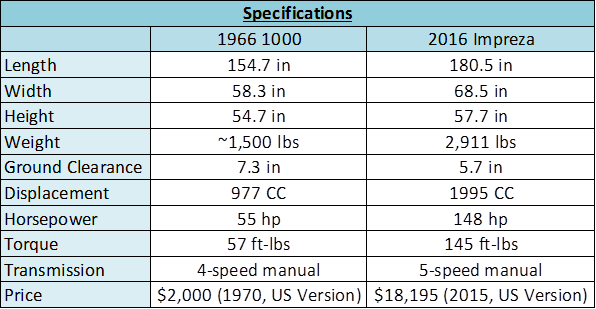
(Special thanks to !!!error: Indecipherable SUB-paragraph formatting!!! and !!!error: Indecipherable SUB-paragraph formatting!!! for source information. Additional photo credits !!!error: Indecipherable SUB-paragraph formatting!!! and !!!error: Indecipherable SUB-paragraph formatting!!! .)
 dogisbadob
> Boxer_4
dogisbadob
> Boxer_4
10/21/2015 at 11:18 |
|
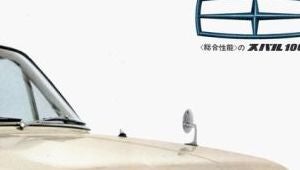
oooo a Town Car going sideways
 JayCee-Arg
> Boxer_4
JayCee-Arg
> Boxer_4
10/21/2015 at 11:21 |
|
I still dream about the GC8... maybe one day, may be...
 Jobjoris
> Boxer_4
Jobjoris
> Boxer_4
10/21/2015 at 11:23 |
|
Quite the read indeed! Great story. That claim about visitors not even noticing that the engine was running sounds quite exaggerated indeed. The first time a compact gave me that feeling was an Ď89 E30 318i, only thing you heard stationary was itís fuel-pump.
 kanadanmajava1
> Boxer_4
kanadanmajava1
> Boxer_4
10/21/2015 at 11:28 |
|
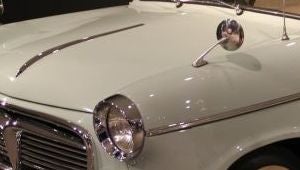
This P-1 is actually quite good looking car. Many other early Japanese cars looked very weird.
 DoctorNine
> Boxer_4
DoctorNine
> Boxer_4
10/21/2015 at 11:29 |
|
This is the best article Iíve seen on
Jalopnik
all week. Really interesting.
 navyeagleeye86
> Boxer_4
navyeagleeye86
> Boxer_4
10/21/2015 at 11:41 |
|
What a great tribute to Subaru, awesome write up. Love these historical type reads!
 Nick
> Jobjoris
Nick
> Jobjoris
10/21/2015 at 11:41 |
|
maybe for the time? i dont know how loud other 60ís engines are, but if its a considerable decrease in noise, they may be able to make that claim. it would be a stretch though
 Boxer_4
> kanadanmajava1
Boxer_4
> kanadanmajava1
10/21/2015 at 11:56 |
|
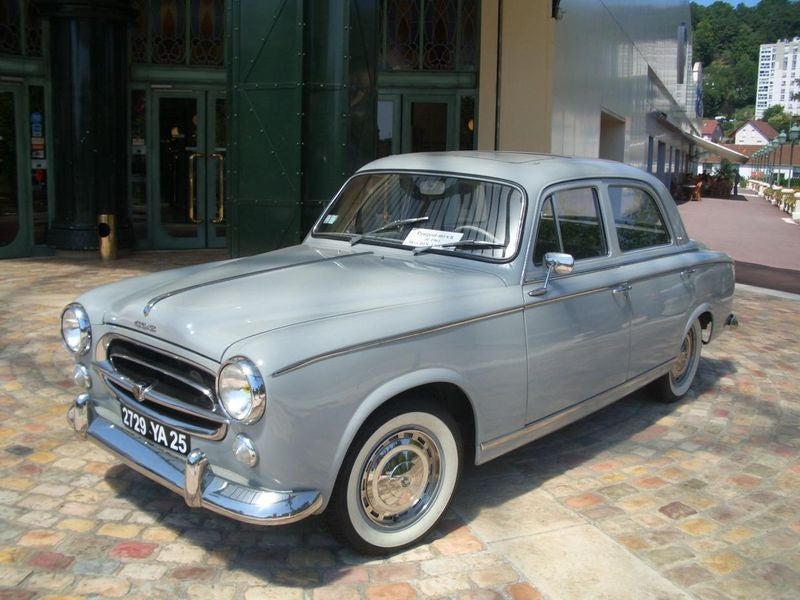
Iím suspicious that the P-1 was influenced by Peugeot designs, specifically the 403. It debuted in 1955, but the design process must have been going on well before then.
It was also available with Peugeotís 1.5 L, which the 202 never had, contrary to what I thought.
 Boxer_4
> Jobjoris
Boxer_4
> Jobjoris
10/21/2015 at 11:59 |
|
Maybe, if the crowd was loud enough, and if they had a band playing...
Oh, wait, that was Tucker.
 Boxer_4
> navyeagleeye86
Boxer_4
> navyeagleeye86
10/21/2015 at 12:01 |
|
This type of article is just as fun to research and write.
 Full of the sound of the Gran Fury, signifying nothing.
> Boxer_4
Full of the sound of the Gran Fury, signifying nothing.
> Boxer_4
10/21/2015 at 12:01 |
|
Funny you mention Peugeot, because the first thing I thought when I saw the FF-1 was ĎRenaultí. If they were going to be copying French cars, why couldnít they have chosen Citroen?
 tapzz
> Boxer_4
tapzz
> Boxer_4
10/21/2015 at 12:08 |
|
I never realised, but that Subaru 1000 sounds quite a lot like a 1960 Lancia Flavia:
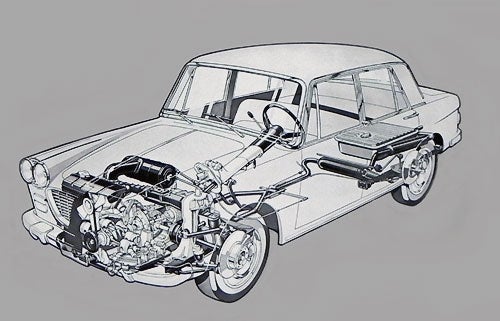
FWD, with a 1500 cc boxer, independent suspension all round. It was quite a bit bigger, though: 1190 kg (2000ish lb), with a 78+ bhp engine.
The Lancia Fulvia was more comparable in size to the Subaru, but had Lanciaís trademark Ďalmost inlineí V4.
 TylerLinner
> Boxer_4
TylerLinner
> Boxer_4
10/21/2015 at 12:17 |
|
Wow! Itís not often I encounter an unknown car, but the 1500 did it.
Great article on the FF-1 which unfortunately doesnít get a lot of love in this country! Thank you for sharing.
Also, I should add that that 1970 base price in todayís dollars would be only $12,265!
 Boxer_4
> tapzz
Boxer_4
> tapzz
10/21/2015 at 12:18 |
|
Thatís very interesting. I don't think I realized that before.
It makes you wonder if Subaru drew inspiration from Lancia as well.
 webmonkees
> Boxer_4
webmonkees
> Boxer_4
10/21/2015 at 12:19 |
|
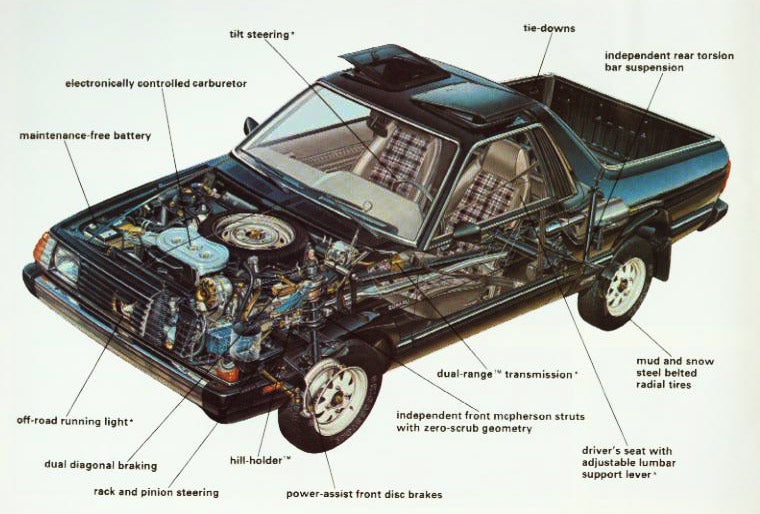
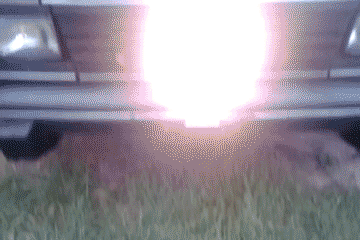
they called it the Ďoff-road running lightí after nobody fell for Ďpassing lightí.
 webmonkees
> Boxer_4
webmonkees
> Boxer_4
10/21/2015 at 12:23 |
|
vintage Peugeot wheels are coveted by vintage Subaru owners wanting more than 13Ē tires. Same bolt pattern.
 OCD-CO
> webmonkees
OCD-CO
> webmonkees
10/21/2015 at 12:28 |
|
My Brotherís 1981 GL Wagon still has this working. We laugh everytime he flips the switch.
 Drakkon- Most Glorious and Upright Person of Genius
> Boxer_4
Drakkon- Most Glorious and Upright Person of Genius
> Boxer_4
10/21/2015 at 12:38 |
|
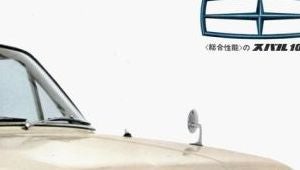
1965 Dodge Durango confirmed!
 hotmud'n'exhaust
> Boxer_4
hotmud'n'exhaust
> Boxer_4
10/21/2015 at 12:56 |
|
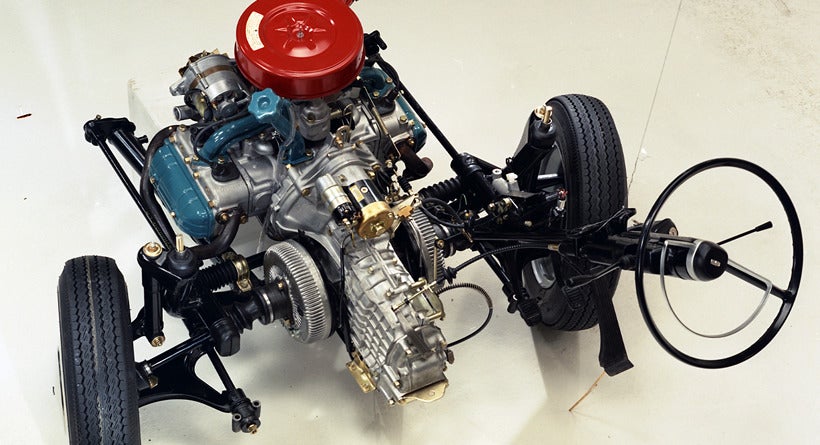
An often overlooked feature of early Subaru cars was their race car derived suspension system consisting of torsion bars, inboard brakes and use of Alfin drums. This was pure race car, providing the lowest possible un-sprung weight solution for the front suspension. Combined with a boxer, low profile, all aluminum engine and trans-axle, this setup would have been at home in any 1 litre class mid-engine sports racer of the 1960ís or 70ís. Lock the steering tie rods and you had a drop in, mid-engine power pack suitable for any ultra light sports racer.
The first of the scratch built Western Washington University (then College) Viking cars used a 1 litre boxer from a 1000. I remember stories of my class mates combing junkyards throughout all of Washington to find one out of a Subaru 1000 in running shape. Finally they discovered one just down the street in a half fallen down garage behind one of the campusís more notorious party houses, brought back by a soldier who was stationed in Japan.
Viking II was a space frame/aluminum honeycomb center tub chassis/ fiberglass body with the Subaru engine/trans-axle in the mid engine configuration. The windshield was custom made in Mexico and cost half the project budget.
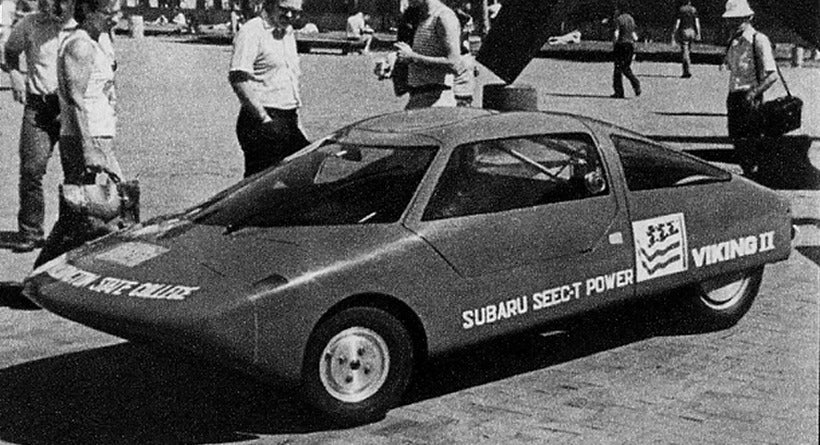
Viking II weighed about 1000 lbs and got about 60 MPG. It was designed as a experimental fuel economy car - but secretly we all knew we were really building lightweight racing cars. It won the first Sea to Sea (Pacific to Atlantic) fuel economy rally in 1972.
Subaru was so impressed, we got new engines in crates after that.
In the mid 70ís I had the pleasure of driving V-II from Seattle to the GM proving grounds and back (now with a boxer 1600cc installed) and it was a rocket. Iíve been a Subaru fan ever since. A truly unique car company in many, many ways.
 Jobjoris
> Nick
Jobjoris
> Nick
10/21/2015 at 12:58 |
|
BIG stretch. Ď60ís engines and soundproofing... Canít find a standard one on Youtube to debunk this claim.
 Nick
> Jobjoris
Nick
> Jobjoris
10/21/2015 at 13:04 |
|
just throwin an idea out there, i have no idea. i know my uncles 70ís chevelle is super loud.
 Jonee
> Boxer_4
Jonee
> Boxer_4
10/21/2015 at 13:58 |
|
Great post. I actually owned an FF-1 wagon and it was a really cool car. Some fascinating engineering on it for a small, cheap car. And a good driver. I always thought Subaru was inspired by the Lloyd boxer 4 cylinder motor which is quite similar to the original 1000 engine.
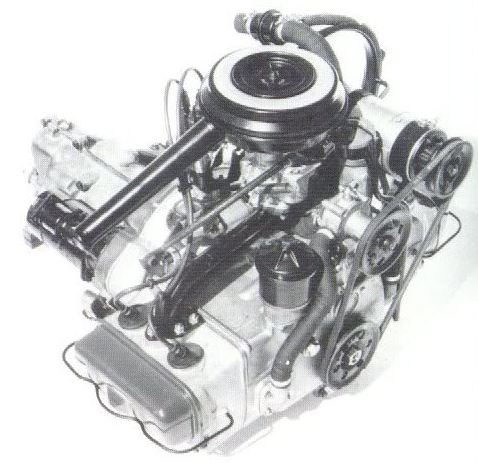
 Mr Joshua
> Boxer_4
Mr Joshua
> Boxer_4
10/21/2015 at 14:33 |
|
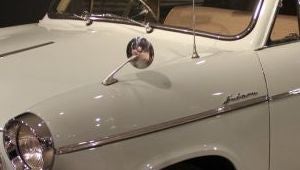
Itís oh so British. You could stick Austin or Morris badges on this and fool a whole assload of people.
 Jimpreza111
> Boxer_4
Jimpreza111
> Boxer_4
10/21/2015 at 14:44 |
|
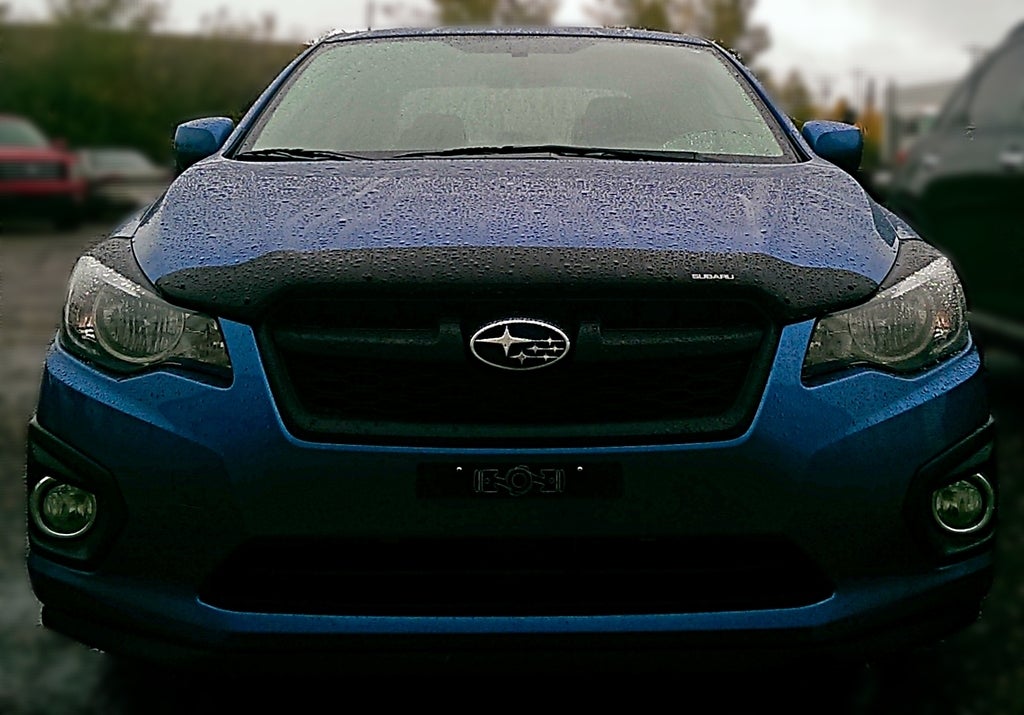
Love my Subi!
 Steve in Manhattan
> Boxer_4
Steve in Manhattan
> Boxer_4
10/21/2015 at 14:58 |
|
The 1000 looks like a Peugeot 504 washed in hot water when you needed to do it in cold.
 Berang
> hotmud'n'exhaust
Berang
> hotmud'n'exhaust
10/21/2015 at 17:12 |
|
I remember visiting WWU years ago and spying this Subaru DOHC prototype:
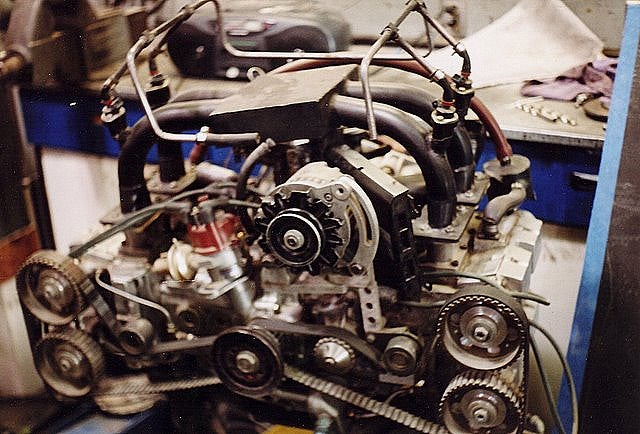
 Berang
> Jonee
Berang
> Jonee
10/21/2015 at 17:19 |
|
And the styling seems inspired by the Ford Taunus:
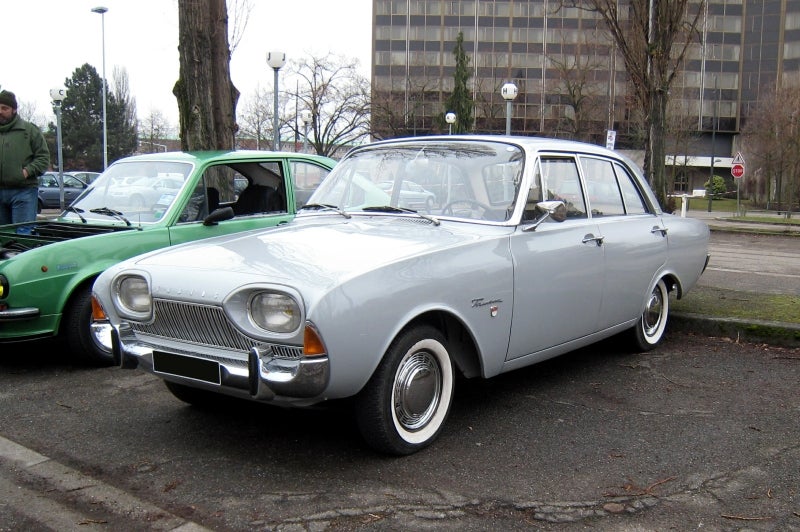
 Boxer_4
> Steve in Manhattan
Boxer_4
> Steve in Manhattan
10/21/2015 at 17:19 |
|
And both use the same obscure 4X140 wheel bolt pattern, too.
 Jonee
> Berang
Jonee
> Berang
10/21/2015 at 17:31 |
|
Indeed. And, Iíve always thought the Taunus design feels like an update to the American 1960 Fords.
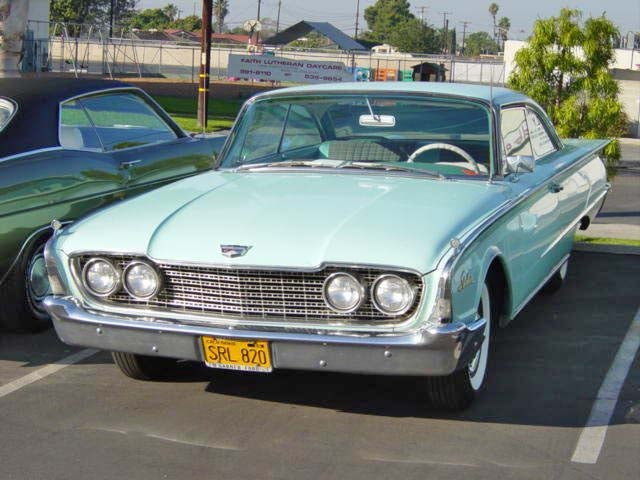
 Boxer_4
> TylerLinner
Boxer_4
> TylerLinner
10/21/2015 at 17:31 |
|
The fact that the FF-1 is extremely rare here doesnít help. Iím not surprised that most people forget that it exists.
That price is about the equivalent of a Mirage today.
 Boxer_4
> Jonee
Boxer_4
> Jonee
10/21/2015 at 17:42 |
|
That does look quite similar. I imagine that Subaru took inspiration from a lot of different manufacturers, something that makes them so interesting.
 Boxer_4
> hotmud'n'exhaust
Boxer_4
> hotmud'n'exhaust
10/21/2015 at 17:50 |
|
This is such an awesome story!
It reminds me a bit my involvement in SAE Supermileage (one of my projects was the windshield), but this is on a completely different level.
Thanks for sharing. I now have something else to research.
 BoxerFanatic, troublesome iconoclast.
> Boxer_4
BoxerFanatic, troublesome iconoclast.
> Boxer_4
10/21/2015 at 18:02 |
|
Subarus boxers are usually regarded as a japanese copy of Alfa/Lanciaís water-cooled boxers, even more than Porsche/VWís air-cooled units.
 Steve in Manhattan
> Boxer_4
Steve in Manhattan
> Boxer_4
10/21/2015 at 18:04 |
|
The Car Guys said the French copy no one, but maybe they did ....
 BoxerFanatic, troublesome iconoclast.
> webmonkees
BoxerFanatic, troublesome iconoclast.
> webmonkees
10/21/2015 at 18:12 |
|
Imagine that updated with a monster LED fixture... like a Clearwater Lights Sevina... 7500 lumens (dimmable) in an 8-degree concentrated spot beam. ~5 amps at 12 volts, ~70 watts, 100+ lumens per watt, where a 70 watt halogen spotlight probably does about 12-ish lumens per watt, probably fewer lumens (~850) than the 1K Lumen Nitecore LED flash light in my pocket. I doubt the passing light was anywhere near 70 watts... probably 35-50 watts sealed-beam.
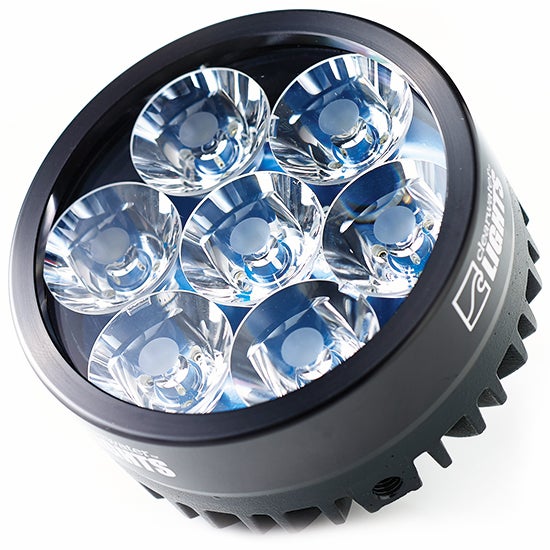
 DrJohannVegas
> hotmud'n'exhaust
DrJohannVegas
> hotmud'n'exhaust
10/21/2015 at 18:18 |
|
Iímma let you finish, but Viking XXX was the best Viking of all time.
/not a FSAE powertrain guy.
 Boxer_4
> BoxerFanatic, troublesome iconoclast.
Boxer_4
> BoxerFanatic, troublesome iconoclast.
10/21/2015 at 18:26 |
|
It makes sense when thinking about it now. I knew Lancia made boxers before, but I never gave it much thought.
 MultiplaOrgasms
> hotmud'n'exhaust
MultiplaOrgasms
> hotmud'n'exhaust
10/21/2015 at 18:29 |
|
It should be noted that CitroŽns boxer engined cars (2CV, Ami, Dyane and GS) also used a nearly identical front suspension setup since 1948, with the main differences being the engines, which were air cooled, and the 2CV derived cars having the famous front-to-rear interconnected leading arm/ trailing arm suspension.
 ranwhenparked
> Boxer_4
ranwhenparked
> Boxer_4
10/21/2015 at 20:46 |
|
$2,000 in 1970 works out to a little over $12,000 today, adjusting for inflation. Considering all the extra features that are now standard in modern cars, the fact that Subaru has moved themselves slightly upmarket from where they used to be, and the fact that they are likely earning a better margin per car than they were back then, I donít think its hard to see where the additional $6000 comes into play.
Realistically, they probably could come out with a stripped down Impreza in the $12-$14k range today without too much difficulty, they just wouldn't make much money on it and nobody would buy it.
 Boxer_4
> ranwhenparked
Boxer_4
> ranwhenparked
10/21/2015 at 21:09 |
|
Thatís pretty spot on.
As a side note, the 1969 360 retailed for $1,300 (or ~$8,300 today). Thatís only a ~$4,200 difference for what you got with the FF-1. Itís no wonder that the FF-1 sold much better than the 360 in the US.
 DipodomysDeserti
> Boxer_4
DipodomysDeserti
> Boxer_4
10/21/2015 at 22:32 |
|
Itís funny that they didnít go air cooled because of performance concerns. My Ď63 Corvair with a flat air-cooled engine makes the same power as my Ď91 Loyale.
 Boxer_4
> DipodomysDeserti
Boxer_4
> DipodomysDeserti
10/21/2015 at 22:56 |
|
But isnít that with ~600 CC and 2 cylinders more?
The Japanese automakers had a fairly large incentive to stay under 1000 CC back then in the form of lower tax liability to their consumers. This changed to under 2000 CC in later years.
 DipodomysDeserti
> webmonkees
DipodomysDeserti
> webmonkees
10/21/2015 at 23:18 |
|
And non vintage owners. My 91 Loyale has the same bolt pattern. You can find the Puegeot wheels pretty cheap though.
 DipodomysDeserti
> Jobjoris
DipodomysDeserti
> Jobjoris
10/21/2015 at 23:22 |
|
My Loyale engine was much quieter than my 325e. That thing sounded like a diesel. Wonder what they did different on the four banger. The new BMW four bangers are very loud at idle, but there's enough cabin dampening that you can't really hear them.
 DipodomysDeserti
> hotmud'n'exhaust
DipodomysDeserti
> hotmud'n'exhaust
10/21/2015 at 23:27 |
|
Of course this happened in Washington. Land of Subarus.
 DipodomysDeserti
> hotmud'n'exhaust
DipodomysDeserti
> hotmud'n'exhaust
10/21/2015 at 23:30 |
|
I have a Ď91 Loyale that I bought a few years ago from the original owner for $800. Perfect interior, no rust, no oil leaks (once I replaced all the seals), 4wd, and a manual transmission. I was thinking about selling it, but your post has convinced me to keep it.
 Tinfoil Hat in a thunderstorm, now with added diecast
> Boxer_4
Tinfoil Hat in a thunderstorm, now with added diecast
> Boxer_4
10/21/2015 at 23:37 |
|
Great read, nice work. Car history is my favourite history!
 Jobjoris
> DipodomysDeserti
Jobjoris
> DipodomysDeserti
10/22/2015 at 03:12 |
|
Differences on the four-banger? The 325e was a completely different designed engine: a long stroke engine based on the Ď70ís M20. The 4-banger Iím talking about was an M40 developed 20 years later.
 Berang
> Boxer_4
Berang
> Boxer_4
10/22/2015 at 03:14 |
|
The early cars were pretty quiet:
 pip bip - choose Corrour
> Boxer_4
pip bip - choose Corrour
> Boxer_4
10/22/2015 at 05:03 |
|
very nice!
 Subie Gal
> Boxer_4
Subie Gal
> Boxer_4
10/22/2015 at 12:22 |
|
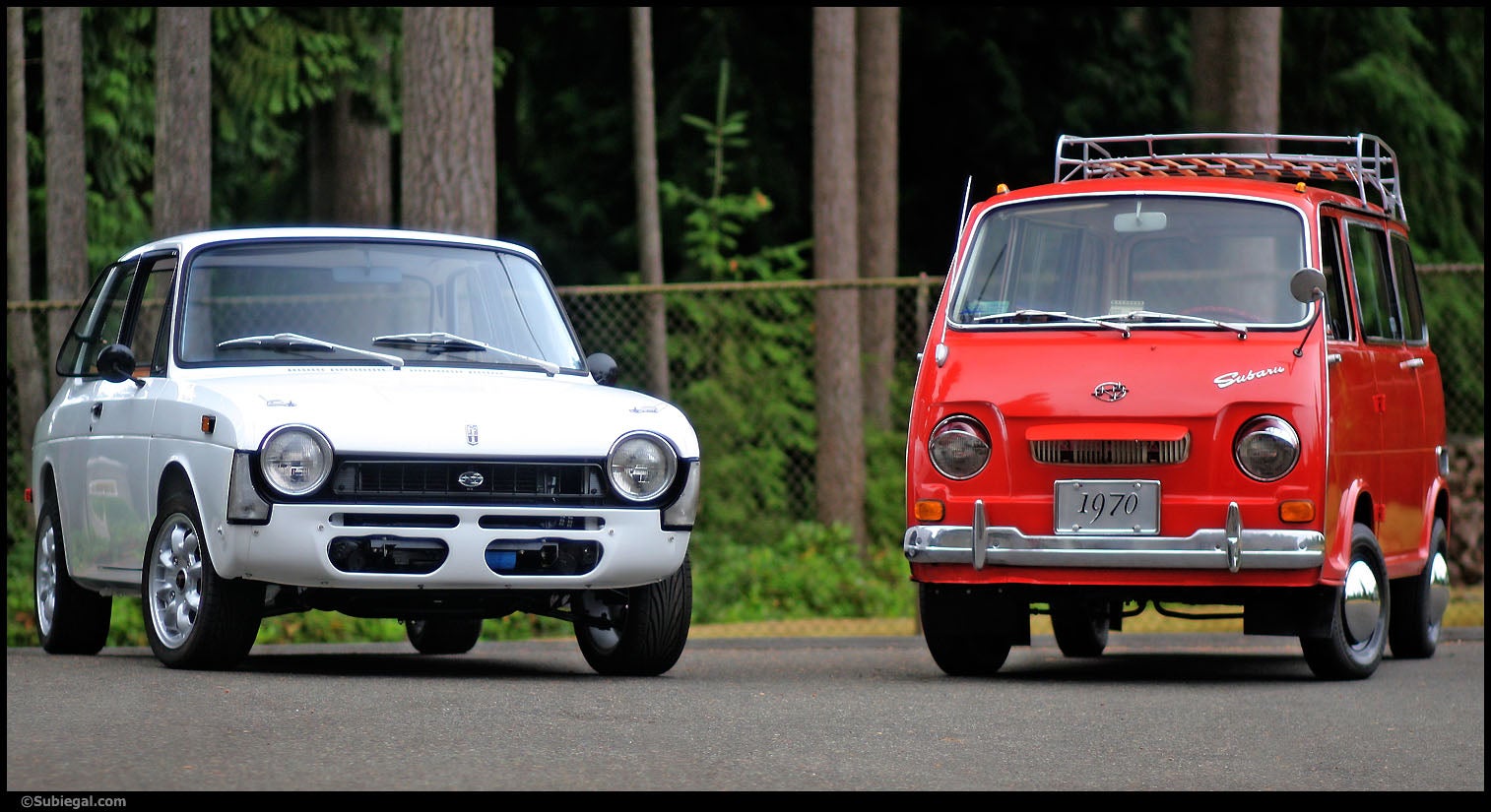
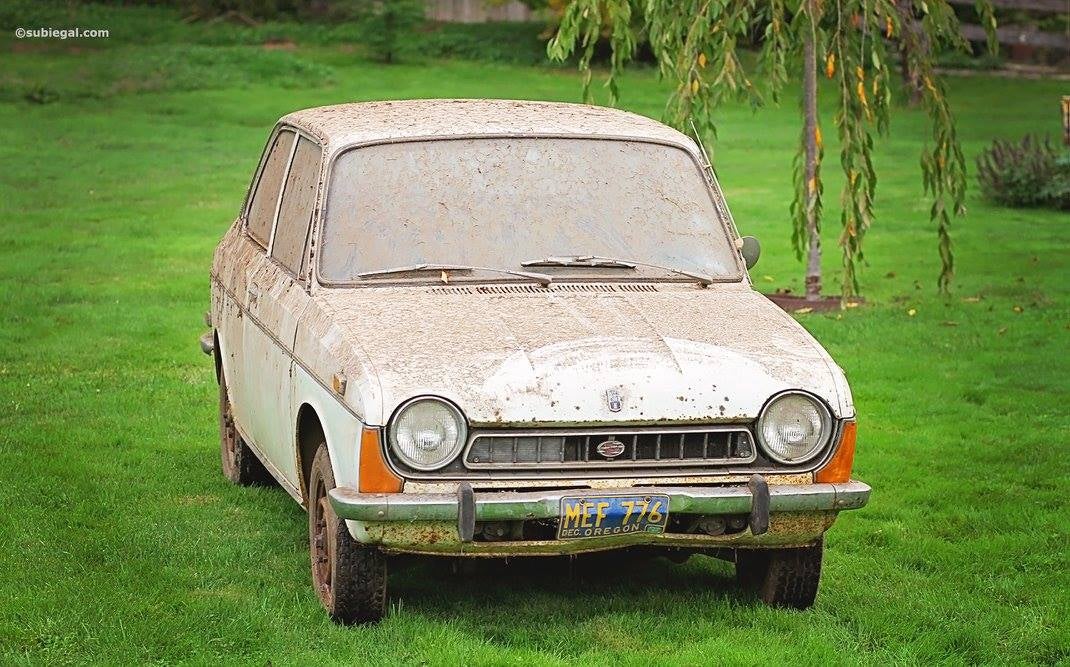
I love this car so much. Hunted for an FF-1 for over a decade before finding them. Iíve one that is modified and restored, the other that is barn find original. Such a great part of Subaru History - makes me happy to own a small part of it.
 webmonkees
> DipodomysDeserti
webmonkees
> DipodomysDeserti
10/22/2015 at 20:17 |
|
1991 is right on the edge of vintage, they sold the Brat (Brumby) in Australia till 1992.
Aside, a bit OT:
I have a mad scheme to Brumbabout Australia; buy one at the start of the trip and see what goes on. Then pack up a contaner with whatever parts are legal to bring back, admittedly not cheap. I have thought about this a bit much.
Jalopnik Video, have I got a project for you.
 webmonkees
> BoxerFanatic, troublesome iconoclast.
webmonkees
> BoxerFanatic, troublesome iconoclast.
10/22/2015 at 20:23 |
|
Itís actually running on the lowest wattage bulb I could get*, but I might wire it up differently if anything ever happens to the unobtanium lens.
*blinding fog lights on clear nights gets my ire in heights.
 DipodomysDeserti
> webmonkees
DipodomysDeserti
> webmonkees
10/22/2015 at 21:53 |
|
I have a Ď66 GMC and a Ď63 Corvair in my driveway, so I consider the Loyale modern.
 BoxerFanatic, troublesome iconoclast.
> webmonkees
BoxerFanatic, troublesome iconoclast.
> webmonkees
10/22/2015 at 22:33 |
|
I wasnít under the impression that it was a fog light, but a passing or off-road light, where luminance would be good.
I wasnít suggesting using a high-output lamp anywhere where it would meet oncoming eyes.
 webmonkees
> BoxerFanatic, troublesome iconoclast.
webmonkees
> BoxerFanatic, troublesome iconoclast.
10/23/2015 at 09:05 |
|
now if you could just pass this philosophy to all the SUV owners who think fog lamps are just more headlamps to use, or in some cases donít even know itís on. A friend lost the switch when somebody closed the cover on the dashboard.
The subaru switch does say Ďpassing lightí and it was no mere relay-closing circuit, all the volts are right there bolted to the dash metal. and above the fuses. they fail spectacularly.
I added the circuit, carefully, and used a different switch (a gen 1 Brat headlamp switch) after salvaging a few crispy switches from other cars.
I am not going for concours. The guy I bought the Brat from had another absolutely mint one in his garage with all the toys and seats and decals.
 BoxerFanatic, troublesome iconoclast.
> webmonkees
BoxerFanatic, troublesome iconoclast.
> webmonkees
10/23/2015 at 11:27 |
|
Kudos for electrical safety and proper circuit design, and not shunting that amperage through the dashboard switches. When I had my old SVX, I re-wired the alternator to battery charging circuit, which was similarly crispy, and added a megafuse between the two to prevent direct short from lasting very long in the event of an accident.
I agree with you... I am a slight bit of a lighting and tech geek, but I am not a big fan of blinding people, and just showing off. I like to see well. I like to be visible for safety... but if everyone else is blinded, they crash into me anyway... ;-)
There are more and more low-intensity LED decorations that are becoming available for those who just want their car or truck to look like a circus attraction, which I donít. I donít see how people can afford thousands of dollars and thousands or tens of thousands of lumens worth of CREE LED driven light bars... they arenít inexpensive.
 gmctavish needs more space
> Mr Joshua
gmctavish needs more space
> Mr Joshua
10/23/2015 at 12:31 |
|
Only if they never saw it moving under its own power :p
 Mr Joshua
> gmctavish needs more space
Mr Joshua
> gmctavish needs more space
10/23/2015 at 14:23 |
|
Perhaps. 55 horsies is not bad for a 977cc engine from this time. The type 3 VW that I had had a 1600 dual carb and it still only had 64 small, lame, 3 legged horses.
 webmonkees
> BoxerFanatic, troublesome iconoclast.
webmonkees
> BoxerFanatic, troublesome iconoclast.
10/23/2015 at 15:40 |
|
thanks, but honestly it was the love of that quirky little lamp, got the whole assembly and relays at a pick n pull for the price of a regular lamp :p Itís not correct for the 4-lamp version but I looked up the laws and I can have up to 5 :) A couple of sawblades later and itís stronger than stock.